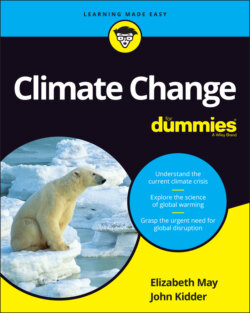Читать книгу Climate Change For Dummies - Elizabeth May - Страница 25
Australia and New Zealand
ОглавлениеIf you ask an Australian or a Kiwi about global warming, you probably won’t get any argument about its negative effects. According to the World Wildlife Fund (WWF), Australia has experienced increased extreme and deadly bush fires, heat waves, less snow, and changes in rainfall. Extreme drought conditions persisted from 2003 to 2012 and from 2017 to today. This heat and lack of precipitation will likely worsen while global warming’s effects intensify.
The ozone layer in the Earth’s atmosphere is sort of like sunscreen for the planet — ozone intercepts some of the ultraviolet radiation that causes sunburn and skin cancer. The use of chlorofluorocarbons for refrigerants and other purposes caused the ozone layer to get thinner, resulting in an ozone hole over Australia and New Zealand. Partly as a result, Australians have the highest incidence of skin cancer on Earth. In 1987, the nations of the world came together to regulate the use of these chemicals, and their concentration in the atmosphere continues to decrease and the ozone layer is making a comeback. But now, increasing average temperatures in Australia and New Zealand are compounding these effects — one problem reduced by international cooperation is still affected by the lack of international cooperation on another.
Climate change has also strongly affected the ocean. Sea levels have already risen 2.8 inches (70 millimeters) in Australia since the 1950s, and increasing ocean temperatures threaten the Great Barrier Reef. The reef is at risk of bleaching, half its coral has disappeared since 1995 and the possibility that it may be lost altogether is becoming more real. (See Chapter 8 for details.)
